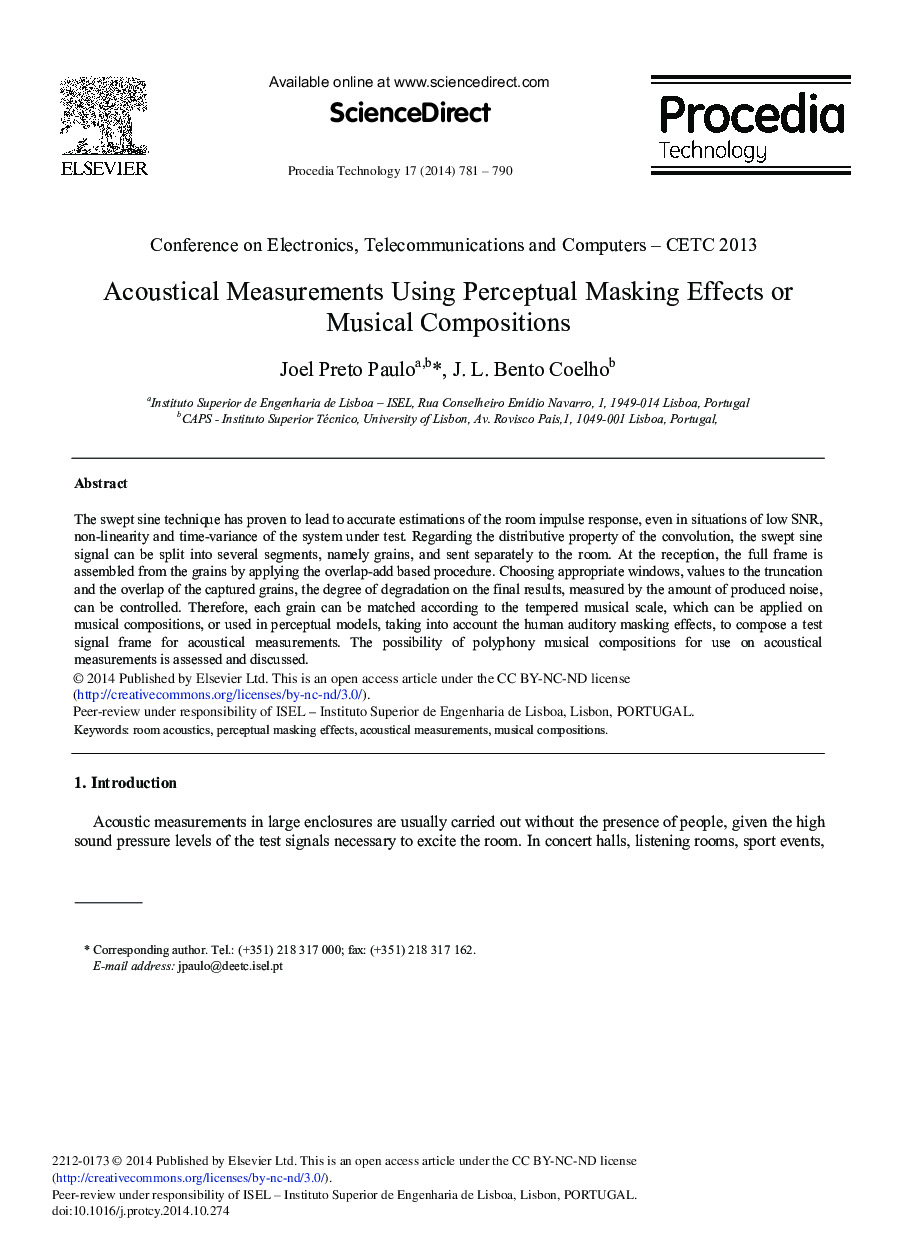| Article ID | Journal | Published Year | Pages | File Type |
|---|---|---|---|---|
| 492765 | Procedia Technology | 2014 | 10 Pages |
The swept sine technique has proven to lead to accurate estimations of the room impulse response, even in situations of low SNR, non-linearity and time-variance of the system under test. Regarding the distributive property of the convolution, the swept sine signal can be split into several segments, namely grains, and sent separately to the room. At the reception, the full frame is assembled from the grains by applying the overlap-add based procedure. Choosing appropriate windows, values to the truncation and the overlap of the captured grains, the degree of degradation on the final results, measured by the amount of produced noise, can be controlled. Therefore, each grain can be matched according to the tempered musical scale, which can be applied on musical compositions, or used in perceptual models, taking into account the human auditory masking effects, to compose a test signal frame for acoustical measurements. The possibility of polyphony musical compositions for use on acoustical measurements is assessed and discussed.
